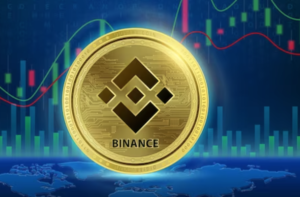$SOL $BTC $ETH
#Solana #CryptoCurrency #Decentralization #BlockchainTechnology #CryptoBots #FeeModel #CryptoNews #BlockchainSustainability #CryptoTrading #CryptoMarket #FinancialTechnology #BeInCrypto
Solana’s fee structure is at the center of a growing debate about the network’s decentralization and whether its economic model favors a handful of participants disproportionately. This concern emerges against the backdrop of Solana’s notable ascent in the blockchain world, where it has been lauded for its speed and efficiency. However, the revelation that just 1.26% of users are responsible for the majority of transaction fees has sparked a dialogue about the long-term viability and fairness of Solana’s fee model. This situation is particularly noteworthy as it appears that bots—automated systems designed to execute transactions at incredible speeds—are significantly driving up the fees on the network.
The fee model, as it stands, benefits from the high throughput of transactions Solana can handle, supposedly offering a cheaper and faster alternative to Ethereum. Yet, the dominance of bots and a small user base in fee generation introduces questions about the network’s ability to maintain a decentralized and equitable platform. Critics argue that a system where a minuscule fraction of users can exert such significant influence over transaction costs undermines the principle of decentralization — a cornerstone of blockchain technology’s appeal. This issue is not unique to Solana but is magnified by its high-performance claims and positioning as a blockchain capable of supporting widespread adoption and complex applications.
In addressing these concerns, it’s vital to explore the mechanisms behind Solana’s fee generation and how they can be adjusted or reformed to promote a more inclusive and less concentrated economic model. A comparison with other blockchain networks shows a variety of models balancing the need to deter spam transactions through fees while encouraging wide participation. For Solana, finding a middle ground might involve technological tweaks to its protocol to discourage bot-driven activities or revising fee structures to be less favorable to high-frequency, low-value transactions.
The discussion about Solana’s fee structure and its implications on decentralization is timely and significant. As the cryptocurrency space evolves, the community’s focus is increasingly on the sustainability and fairness of blockchain networks. Solana’s challenge is to address these criticisms constructively, ensuring that it can maintain its competitive edge without sacrificing the principles that make blockchain technology revolutionary. The resolution of these issues will not only affect Solana’s future but also set a precedent for how emerging blockchain platforms tackle the complex balance between performance, decentralization, and user inclusivity.





